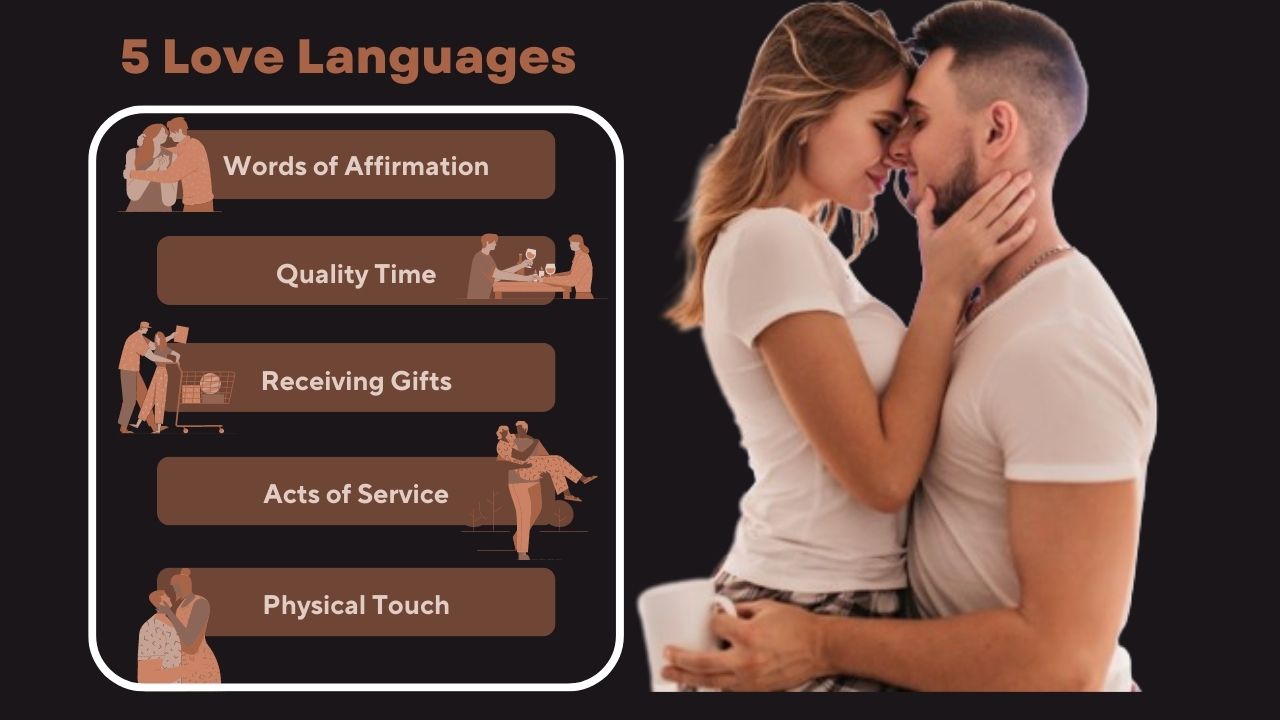Love is a universal language, but it is also a complex one. It can be expressed and received in many different ways, and not everyone experiences or expresses it in the same way. This is where the concept of love languages comes in. Developed by Dr. Gary Chapman, the idea of love languages suggests that people have different ways of expressing and receiving love and understanding these differences can lead to stronger and more fulfilling relationships.
In today’s post, we’ll explore the five love languages, how to identify your partner’s love language, and how to communicate your own needs effectively.
What are Love Languages?
Love languages are the different ways in which people express and receive love. According to Dr. Chapman, there are five primary love languages:
Words of Affirmation
This love language involves expressing affection through spoken or written words, such as compliments, encouragement, and appreciation. For individuals who value Words of Affirmation as their primary love language, hearing positive and affirming words is a powerful way to feel loved and valued. Words of Affirmation can be a powerful love language that fosters emotional connection, boosts self-esteem, and nurtures the relationship
Acts of Service
This love language involves expressing love through actions, such as doing chores, running errands, or performing other acts of kindness. Acts of Service is a love language that emphasizes the importance of action and practical support in showing love and care. For individuals who appreciate this love language, these acts communicate thoughtfulness, attentiveness, and a willingness to invest time and effort in their well-being. It’s important to communicate and understand each other’s love languages to build a strong and fulfilling relationship.
Receiving Gifts
This love language involves expressing love through the giving and receiving of gifts. Gifts allow us to express our love, appreciation, and support for one another. A gift doesn’t have to be extravagant or expensive to be meaningful, as the true value of a gift does not depend on its monetary worth, but on the sentiment behind it. It’s the thought, effort, and personal touch that makes a gift truly special.
Quality Time
This love language involves expressing love through spending time together, such as going on dates or engaging in shared activities. When couples spend time together, it strengthens their bond, deepens their connection, and nurtures the relationship. This also helps them to maintain effective communication, create shared experiences, keep the romance alive, and support each other’s growth. It forms the foundation for a healthy, fulfilling, and lasting relationship.
Physical Touch
For individuals whose primary love language is Physical Touch, physical connection is a powerful way to feel loved and valued. It involves expressing love through physical touch, such as hugging, kissing, or holding hands. Physical Touch as a love language plays a significant role in creating an emotional connection, fostering intimacy, and strengthening the bond between individuals. By understanding and embracing this love language, couples can cultivate a deep sense of love and fulfillment in their relationship.
Understanding Your Partner’s Love Language
Identifying your partner’s love language can be challenging, as people often express and receive love in multiple ways. However, there are a few things you can do to help identify your partner’s love language:
Observe their behavior: Pay attention to the ways in which your partner expresses love. Do they give you compliments or perform acts of service? Do they enjoy spending quality time with you or giving and receiving gifts?
Ask them: Sometimes the best way to understand your partner’s love language is to simply ask them. This can be done through open and honest communication, such as asking them how they prefer to receive affection.
Take the Love Languages quiz: The Love Languages quiz, developed by Dr. Chapman, is a simple and effective way to identify your partner’s love language. The quiz can be found on the official Love Languages website.
Communicating Your Own Needs
Once you have identified your partner’s love language, it is important to communicate your own needs effectively. This can be done through the following steps:
- Identify your own love language: In order to effectively communicate your needs, you must first identify your own love language. Take the Love Languages quiz yourself to gain a better understanding of how you prefer to give and receive love.
- Express your needs: Communicate to your partner how you prefer to receive affection. Be specific about the actions or behaviors that make you feel loved.
- Be open to compromise: Remember that everyone has their own way of expressing and receiving love. Be open to compromising and finding ways to meet each other’s needs.
Conclusion
Love languages are a valuable tool for understanding and strengthening relationships. By identifying your partner’s love language and effectively communicating your own needs, you can build a stronger and more fulfilling relationship. Remember to be patient, open-minded, and always willing to show love in a way that resonates with your partner.




